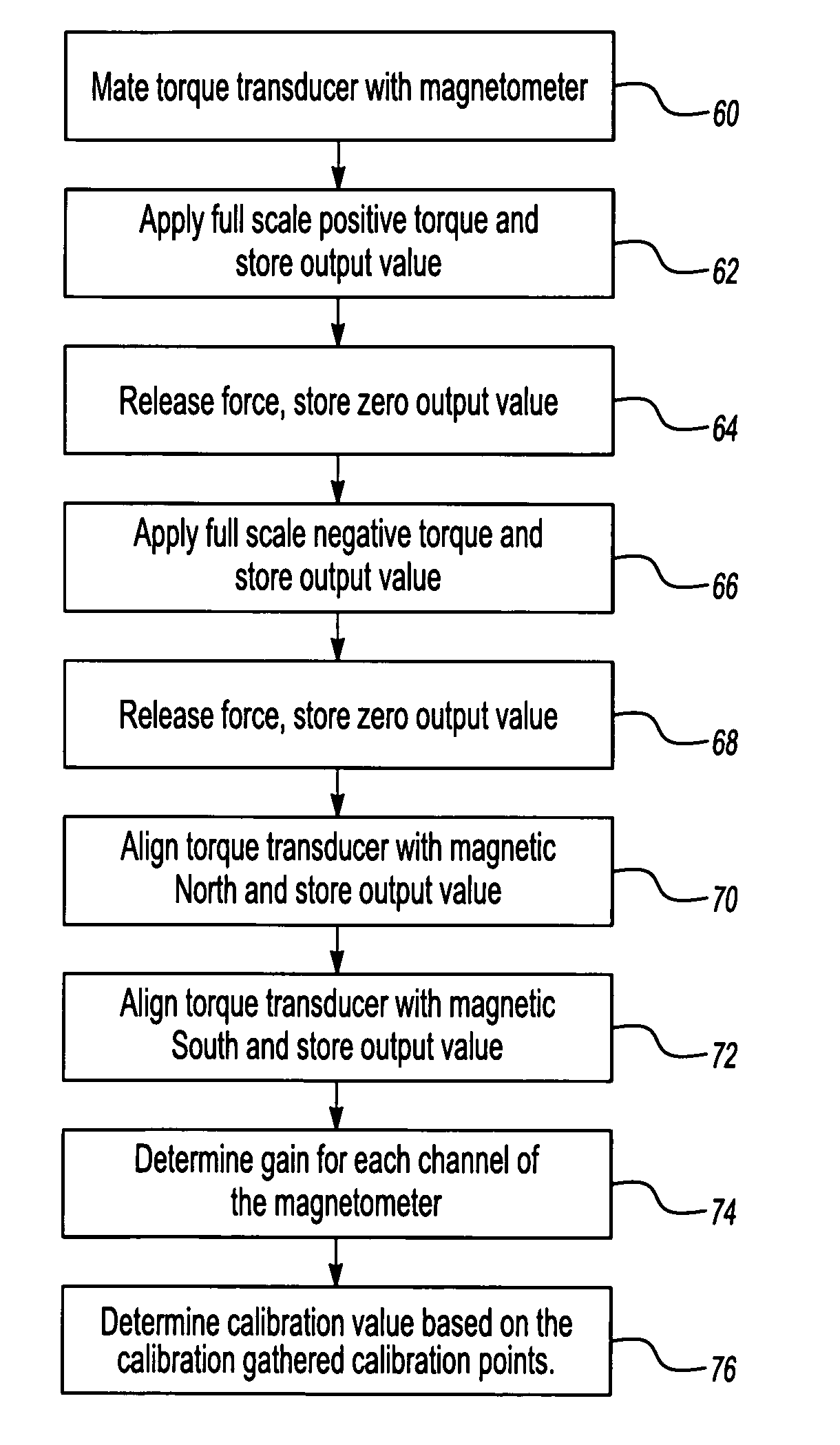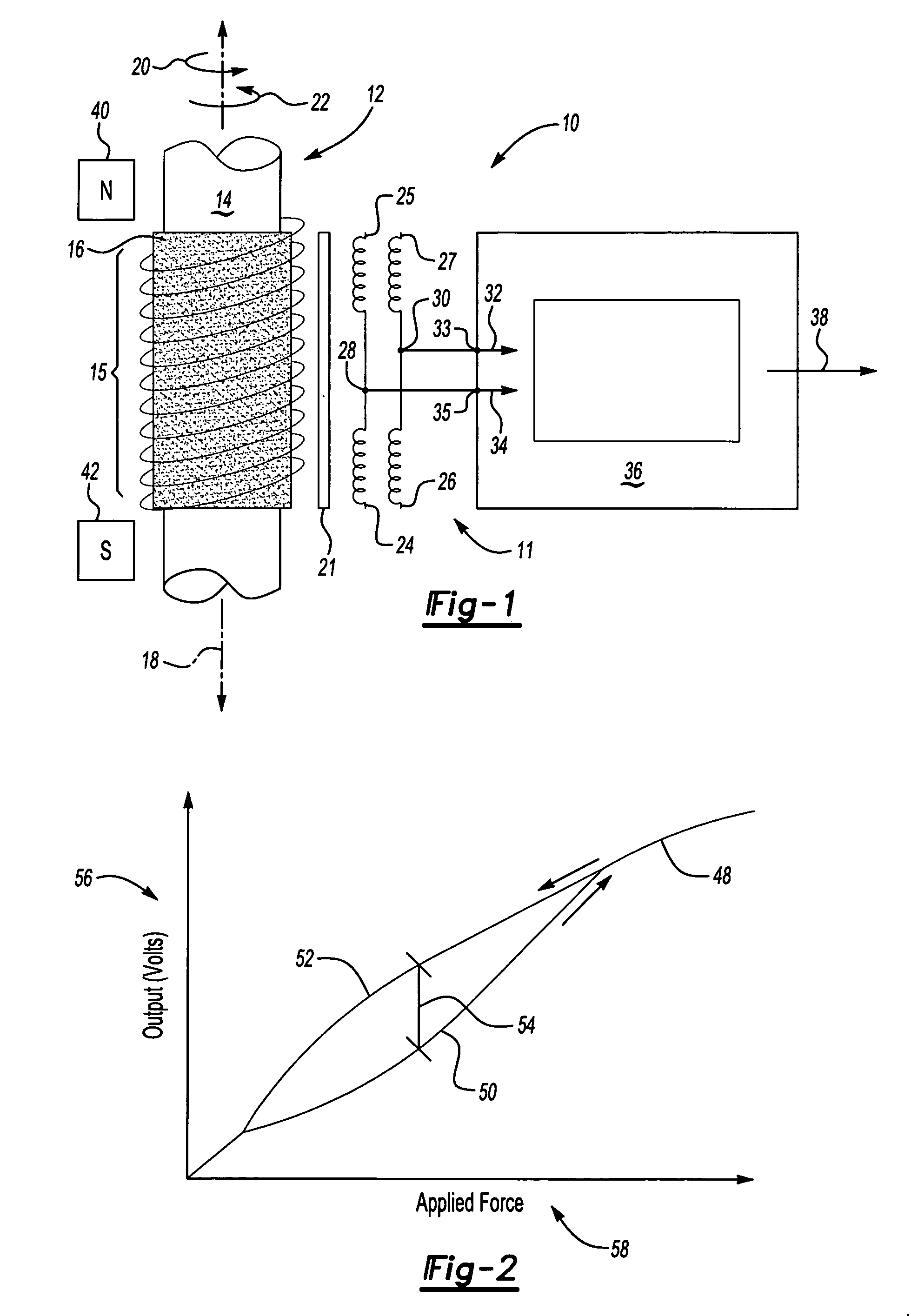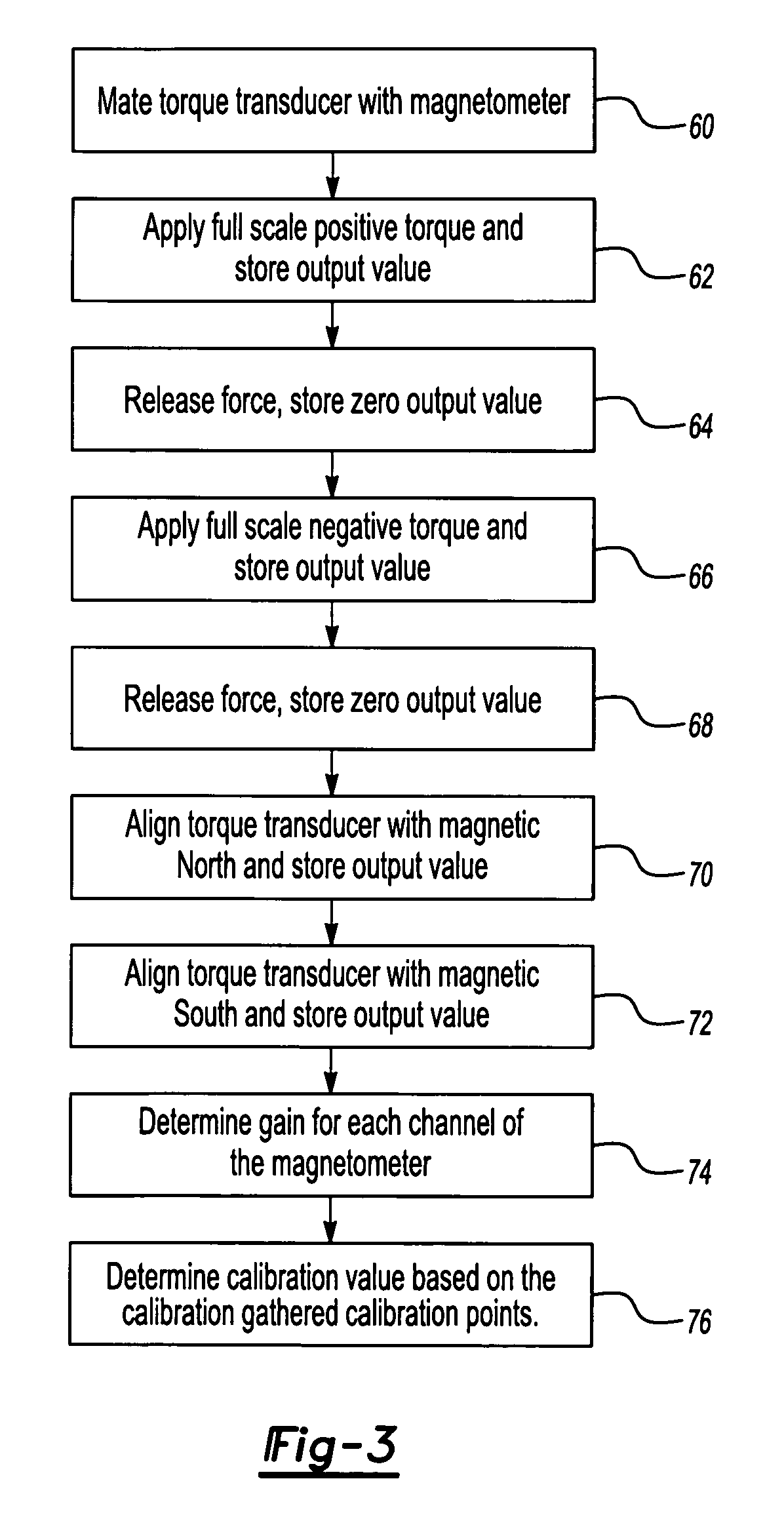Auto-calibration algorithm with hysteresis correction
a technology of auto-calibration and correction algorithm, which is applied in the calibration/testing of force/torque/work measurement apparatus, instruments, liquid/fluent solid measurement, etc., can solve the problems of reducing sensor reliability and accuracy, non-zero sensitivity of sensor, and sensor accuracy reduction, etc., to improve the accuracy of force sensor assembly and magnetometer.
- Summary
- Abstract
- Description
- Claims
- Application Information
AI Technical Summary
Benefits of technology
Problems solved by technology
Method used
Image
Examples
Embodiment Construction
[0017] Referring to FIG. 1, a torque sensor assembly 10 is schematically shown and includes a torque transducer 12 disposed about an axis 18. The torque transducer 12 includes a shaft 14 with a magnetoelastic ring 16. The magnetoelastic ring 16 produces a magnetic field 15 responsive to the application of torque on the shaft 14. A magnetometer assembly 11 includes an inductor 21 disposed adjacent the torque transducer 12 that is magnetically saturated by a coil assembly. The coil assembly includes upper inner and outer coils 25, 27 and lower inner and outer coils 24, 26. The inner coils 25, 24 are configured to generate a magnetic field equal and opposite to a magnetic field generated by the outer coils 26, 27.
[0018] A controller 36 energizes the coils 24, 25, 26, 27 with an alternating current to generate an alternating magnetic field. The alternating magnetic field causes a magnetic saturation of the inductor 21. When a torque is applied to the torque transducer 12, the generated...
PUM
 Login to View More
Login to View More Abstract
Description
Claims
Application Information
 Login to View More
Login to View More - R&D
- Intellectual Property
- Life Sciences
- Materials
- Tech Scout
- Unparalleled Data Quality
- Higher Quality Content
- 60% Fewer Hallucinations
Browse by: Latest US Patents, China's latest patents, Technical Efficacy Thesaurus, Application Domain, Technology Topic, Popular Technical Reports.
© 2025 PatSnap. All rights reserved.Legal|Privacy policy|Modern Slavery Act Transparency Statement|Sitemap|About US| Contact US: help@patsnap.com



